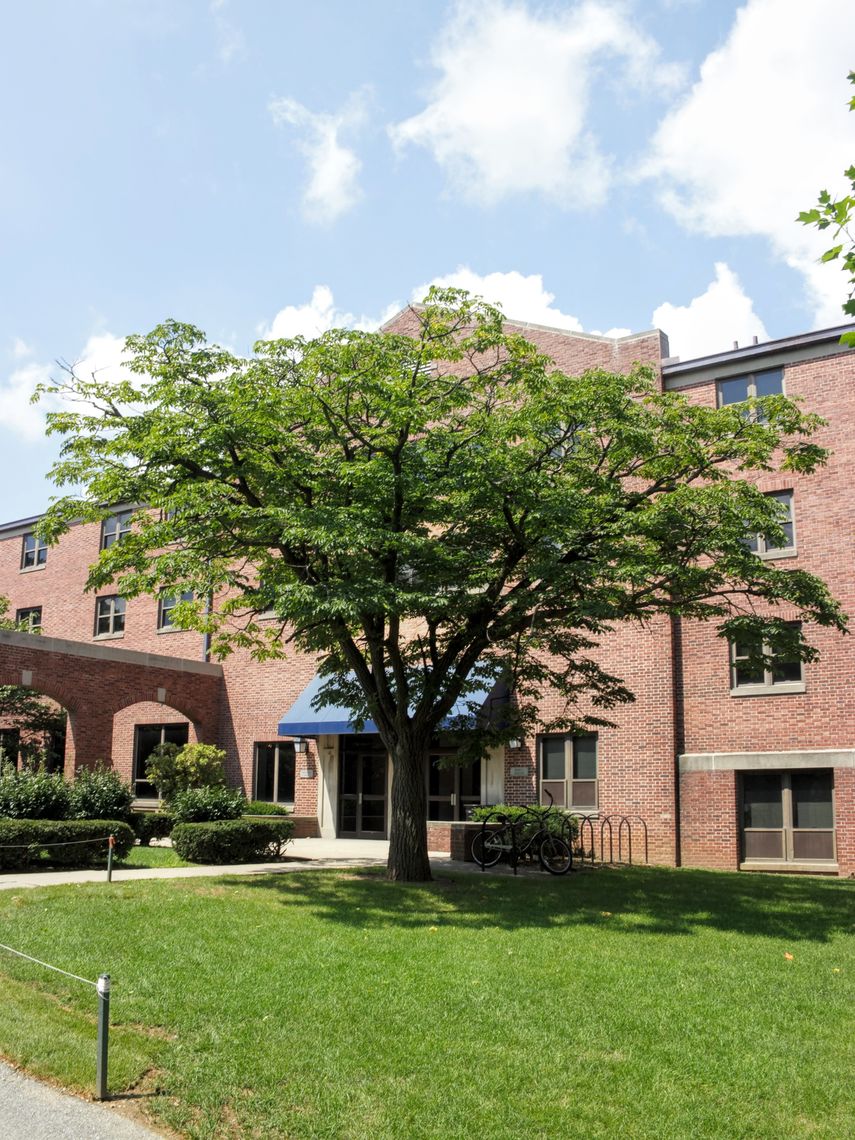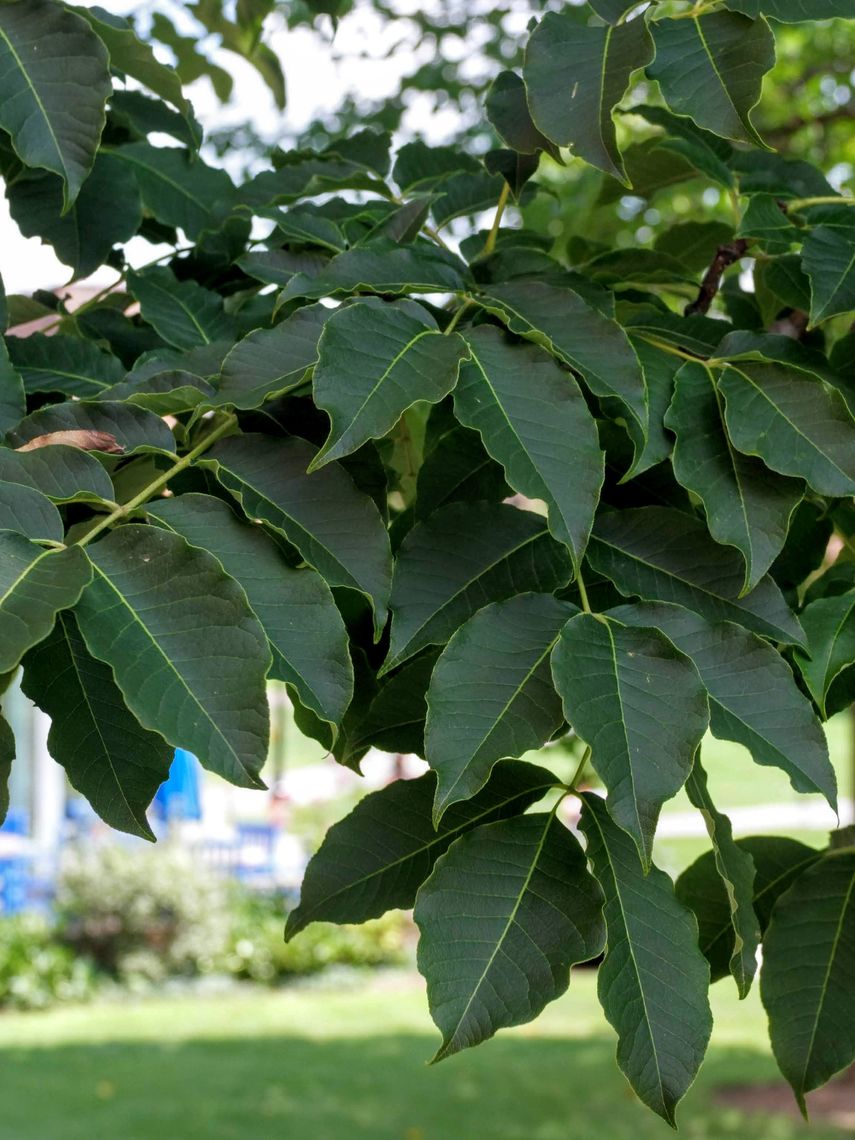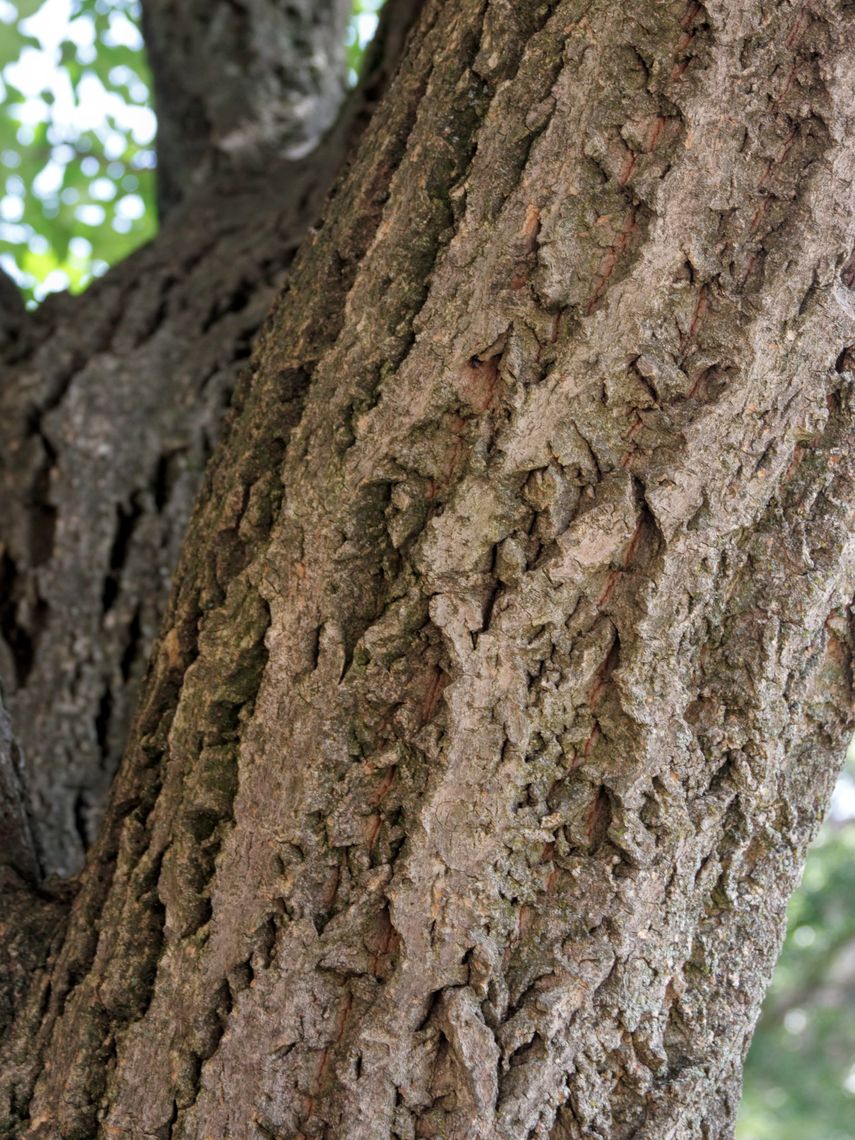Amur Cork Tree (Phellodendron amurense)
The Amur cork tree is most notable for its canopy shape and distinct bark. It is a broad spreading tree with a short trunk and low lying branches. On many trees, the large lower branches dip down and touch the ground. The tree's bark is gray-brown, ridged, and has a cork-like appearance, hence its common name. The leaves are composed of many smaller leaflets which turn a rich yellow color in the fall.
Family: Rutaceae (Rue)
Characteristics: The leaves are composed of 5-11 leaflets, which are each 2 ½ to 4 ½ inches long. In the fall, leaves turn a bronzy to rich yellow color. The flowers are small, yellow, and often hard to notice. Female flowers give way to small, black, and berry-like fruits. Bark is gray-brown and has a cork-like apperance. This is a broad spreading tree and has a short trunk. It grows 30-45 feet high and wide.
Foliage: Deciduous (leaves lost seasonally)
Geographic Origin: Northern China, Korea, Japan (non-native)
Cultivation Notes: Requires low maintenance. Does best in full sun. Prefers alkaline, moist, and well-drained soils. This tree is tolerant to drought conditions and air pollution. Female trees produce messy fruits, but will not produce without a male pollinator.
Number on Campus: 2
Sources: Dirr, Morton Arboretum, Missouri Botanical Garden



